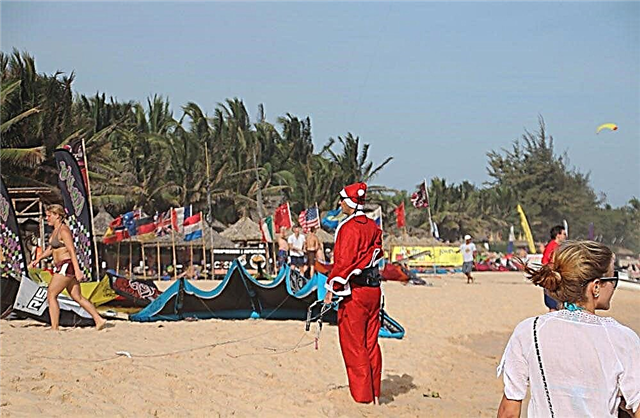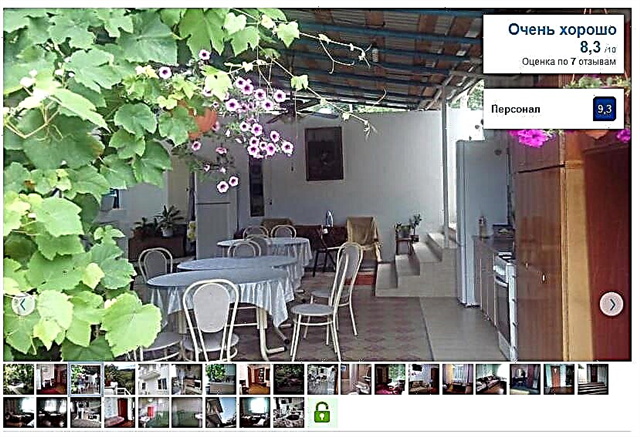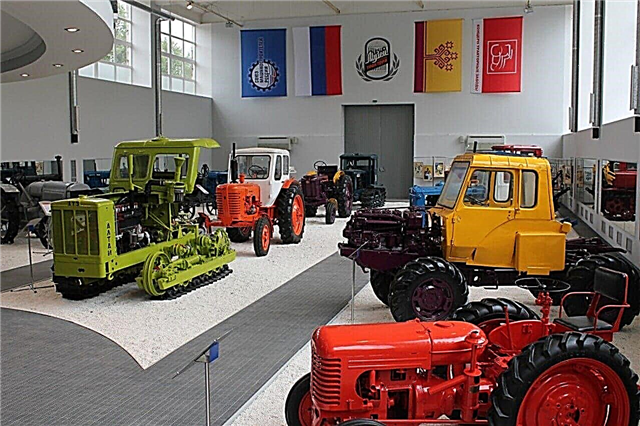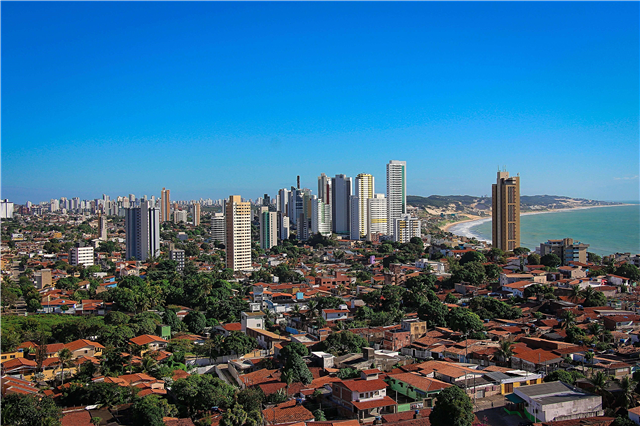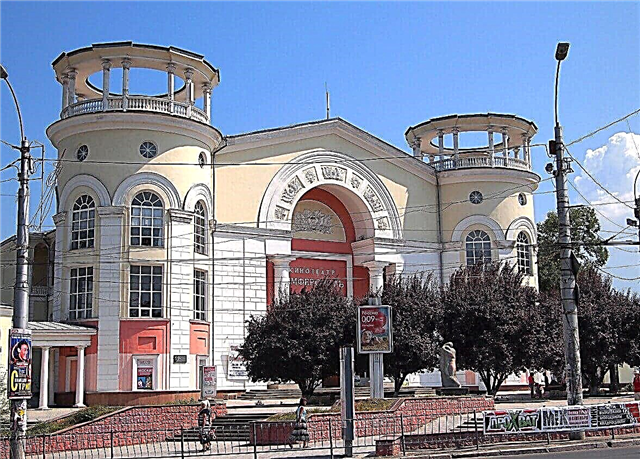Simferopol is the second largest city in Crimea. It stands on the Salgir River far from the Black Sea coast, therefore, it is impossible to call Simferopol a resort place in its pure form. Nevertheless, there are enough attractions to fill any tourist's schedule to the eyeballs.
Like many parts of the Crimean peninsula, visitors associate Simferopol and its environs primarily with natural beauties, for example, with the Marble Cave or with the Su-Uchkhan waterfall. The rich and ancient history is also reflected in the surviving monuments of archeology and architecture, such as the "Scythian Naples" or the Kebir-Jami mosque. And you can learn more about the history and features of the region in the Central Museum of Taurida.
The most interesting and beautiful places
List, photos with names and descriptions of the best attractions of Simferopol. He will help you plan routes for exploring the top places of the city and its environs in 2-3 days.
Museum-Reserve "Scythian Naples"
It has existed in its current form since 2011. The settlement found by archaeologists was founded by the ancient Greeks, and then captured by the Scythians. Only one building has survived - a defensive tower. The territory also contains the foundations of ancient buildings and fragments of the fortress walls. They are dated to the 3rd century BC. - III century A.D. The main exhibits are jewelry, limestone sculpture, a slab with an epitaph to Tsar Artog, figurines, amphorae.

Central Museum of Taurida
Founded in 1887. It unites collections on the history, nature and culture of the region. They describe all the important events and milestones based on the development of the peninsula. The total number of exhibits exceeds 150 thousand. Part of the collection was irretrievably lost during the Great Patriotic War. The scientific library of Tavrik named after A.Kh. Steven belongs to the museum. The museum moved to the building on Pushkinskaya Street in 1927.

Mount Chatyr-Dag (25 km)
It is located 25 km from the city between Simferopol and Alushta. The highest point is 1527 meters. The first name is Trebizond, which can be translated as "capital mountain". The translation of the modern name is “tent-mountain”. This is due to the shape of the upper plateau: it is completely flat. The lower plateau abounds in caves with excursion routes. The most popular are Marble, Obvalnaya, Emine-Bair-Koba, Emine-Bair-Khosar.

Pushkin street
Passes through the central part of the city. For more than a hundred years it bears the name of a famous writer Significant objects are the Drama Theater, the building of which is decorated with busts and sculptures, and the Central Museum of Tavrida. There are many restaurants, cafes, shops, souvenir shops, small markets in the area. In the evening, boulevards and parks adjacent to the street are illuminated by lanterns and turn into walking areas.

Salgirka park
It has existed since the end of the 18th century, but has been rebuilt many times. The oldest plant in the park is the London plane tree, planted by the founder of Salgirka, the German scientist Peter Simon Pallas. His estate has also survived to this day. Another significant architectural object is the Vorontsov House, the style of which imitates the Khan's Palace of Bakhchisarai. Arboretums have been created at the Botanical Garden.

Park named after Yuri Gagarin
Opened in 1965. The area is over 36 hectares. According to this indicator, it has no analogues among the city parks of the Crimea. In 2014, the Walk of Fame appeared here. On it you can see monuments to outstanding personalities: writers and military leaders. The main alley leads to the eternal flame. Two artificial lakes have been created in the central part. The Salgir River flows through the park. Bridges cross it in several places.

Simferopol Kenassa
The prayer house of the East European Karaites was built in the 1890s. The architectural style is eclectic, but with elements of other styles. During its history, the building has changed owners several times, its purpose and rebuilt, therefore, it has partially lost its original decor. Kenassa was returned to the religious community in 2014. At the same time, restoration work began here.

Holy Trinity Convent
Established in 2003 at the temple of the same name. The facade of the building is decorated with bright paintings. The cathedral itself contains one of the most famous icons of the Crimea - the Mother of God "Sorrow". The monastery has workshops, including sewing and handicrafts, a bakery, and a Sunday school. The abbess and the sisters opened the Museum of St. Luke on their own. There is a choir in the monastery, which also performs outside the monastery.

Kirov Avenue
The main transport artery of the city connects two markets, Kuibyshevsky and Central, crosses Salgir and passes through two city districts. The first name of the street is Living Room. In 1935 it was renamed in honor of the revolutionary and politician Sergei Kirov. In 1960, the street became an avenue. Here are: the stadium "Locomotive", the House of Cinema, All Saints Church, Central Department Store, Children's Park, numerous architectural monuments.

Memorial "Concentration camp" Red "
At this place, the Nazis and collaborators organized the largest death camp in Crimea during the Great Patriotic War. After the war, German prisoners were kept here. The memorial appeared in 2015. Its main objects are a mass grave, an eternal flame and the "Square of Memory". In the park there is a monument to the victims and a chapel, and the ground here is covered with gray granite chips to imitate ashes.

Eski-Saray Mosque
The monument of the Crimean Tatar architecture of the XIV century is located in the village of Pionerskoye, 14 km from the city. The former mosque was part of the palace complex, but now it is in ruins. However, in 1969, work was carried out to strengthen the structure in order to prevent it from completely collapsing. All four walls, as well as window and door openings, are intact. The dome, which was in place in the first half of the last century, is now absent.

Crimean Academic Theater named after M. Gorky
Founded in 1821. The current theater building was built in 1911. The troupe moved here when their previous premises were demolished. Outside and inside, the building is decorated with sculptures, paintings and stucco moldings. Particularly noteworthy are the marble staircases and bronze knights "guarding" them. Eminent artists are associated with this theater, for example, Mikhail Schepkin, Faina Ranevskaya, Isaac Dunaevsky.

Parks and squares of Simferopol
Simferopol has a large number of beautiful parks and squares. It is pleasant to relax here in the shade of trees, away from the city noise. You can find attractions, a zoo, see fountains and sculptures.
Children's park
It is located in the center of the city on an area of 10 hectares. In Soviet times, the park was larger and popular, but then it was abandoned. It began to be extensively restored in 2011. Significant objects of the park: a natural monument - an oak "Bogatyr of Tavrida", a rollerdrome, a Glade of fairy tales, an astronomical observatory "Seeker", a zoo, Alley of pioneer heroes and attractions, including a Ferris wheel.

Catherine garden
The oldest public park in the city. The area is almost 4 hectares. In the 90s of the last century, it was in desolation. During the reconstruction, which began in 2007, it was possible to restore some of the previously lost sights, such as the Savopulo fountain and the monument to Catherine II. One significant but controversial object appeared in the park - a hotel. The controversy about the expediency of its opening has not ceased to this day.

Taras Shevchenko Park
It starts with a beautiful arch, from which the main alley stretches. The area is 5 hectares. On the territory of the park there is a long-term construction - a project of an open-air cinema. In 1997, a monument to Taras Shevchenko was erected here.The reconstruction was delayed, but the paths and the fence were replaced, as well as the non-working attractions were removed and the dead trees were cut down. In 2019, part of the park was given for the construction of an entertainment center.

Park named after K. A. Trenev
Spread out between the central streets of the city. Originally called the Park of Flowers, later it was named after the Soviet writer Konstantin Trenev. A monument to the playwright adorned one of the alleys. A fountain was laid nearby at the same time. It did not work in the 90s and was restored in 2012 as part of the reconstruction of the park. And in August, a traditional school bazaar is held here.

Square of the 200th anniversary of Simferopol
This place has three names. Initially it was named after the revolutionary Pavel Dybenko. Then it was renamed in honor of the 200th anniversary of Simferopol. Since 2007, the park has acquired a popular nickname - “Park of Forged Figures”. The reason is that local blacksmiths, and not only professionals, began to install their works of different styles and forms here. The collection is updated every year with new items.

Architectural landmarks of Simferopol
In historical Simferopol, it is pleasant to walk along the streets and look at beautiful buildings and structures. You can see famous architectural monuments and urban planning objects.
Vorontsov's house
Named after the name of the governor who owned the house. It is also called the "House on Salgir" because of its location. Members of the royal family and their entourage stayed here. The austere classical style of the building is emphasized by columns, statues of lions on the stairs and an outdoor terrace. The landmark has been restored and restored many times, the current building and its design are a copy of the original.

The building of the station "Simferopol"
The current station building was built in 1951. The mechanical clock tower is visible from afar, as its height is 42 meters. The zodiac signs are placed on the dial, but intentional errors have been made in their arrangement and display. Two galleries extend from the central part of the building, which will form a quiet courtyard with a fountain. Sochi railway station is a copy of Simferopol railway station.

Water tower
Built at the beginning of the 20th century for household needs. At the same time, the view of the tower is unusual, with features of the oriental style. The conserved attraction is located near the mental hospital. Now it is not used for its intended purpose, and it is impossible to get inside - the windows are boarded up or bricked up, and there is a grill on the door. In addition, it is unsafe nearby: there is a possibility of collapse.

The estate of academician P.S.Pallas
The architectural monument of the 18th century is made in the Turkish style. Peter Simon Pallas is not the first owner of the estate, but it was he who made it one of the main attractions of the city. The German scientist named the estate "Karolinovka" in honor of his wife. He ordered to set up a park around, which has grown and is now known as "Sargirka". The estate has survived to this day practically unchanged.

House of Semerdzhiev
The first owner of the mansion was a merchant, his name is also an architectural monument of the 19th century. From the moment of construction, the distribution by floors has not changed: shops are concentrated on the first, while the second and third remain residential. The facade of the building has been restored. Bed tones bring out the eclectic details. The decoration has changed little, both inside and outside. This primarily applies to stucco molding.

Iconic places of Simferopol
Among the architectural monuments, the beautiful mosques and churches of Simferopol stand out. Of the religious sites, most of all in the city are Orthodox churches.
Kebir-Jami Mosque
The main Friday mosque of Crimea. It was first mentioned in the 16th century, making it the oldest building in the city. There were troubled times in the history of Kebir-Jami. After the deportation of the Crimean Tatars, she was given to a workshop. This territory was returned to Muslims only in the late 1980s. At the moment, the complex includes a mosque, a madrasah, a library, the residence of the mufti and the spiritual administration of the Muslims of the peninsula.

Alexander Nevsky Cathedral
For a long time it was the main Orthodox church in the city. The architectural monument, executed in the classicism style, was destroyed in 1930. A public garden was laid out in its place, and at the end of World War II a tank-monument was erected. In 1999, a decision was made to restore the cathedral. His project is largely based on the plan of the original structure, but there are quite a few differences. At the moment it is a working temple.

Peter and Paul Cathedral
They began to think about building a new church when the church of Constantine and Helena ceased to accommodate parishioners. In 1806, a wooden church was consecrated. She served 20 years, but was dilapidated and was closed. In 1870, a stone church was built. In Soviet times, a warehouse was located in the building. The revival of the cathedral stretched out over time, but in 2003 it was given the status of a cathedral.

Temple of Constantine and Helena
The oldest temple in Simferopol. Illuminated in honor of Tsar Constantine and his mother Helena. The temple was visited by Catherine II, so the common people began to call it the "Catherine Church". In Soviet times, services ceased, and the building was changed and transferred to the flying club, and then to the archive. After the collapse of the USSR, the revival of the temple began. The first service after reconstruction took place in 2011.

Temple of the Three Saints
One of the oldest Orthodox churches in the city. It was built in the first years of the last century, and already in 1922 it stopped working. The building housed an archive and a book depository in succession. In 1989, the territory with all the buildings was returned to the church. The five-domed church was re-consecrated and restored. The faces of three saints appeared in the central part: Gregory the Theologian, Basil the Great and John Chrysostom.

The best museums in Simferopol
The most interesting and popular museums in the city, which you should definitely visit.
Crimean Ethnographic Museum
Has been working since 1992. The museum building is an object of cultural heritage of the peoples of Russia. It used to be an orphanage for girls. The exposition of 13 thousand exhibits is divided into 4 groups: "Mosaic of Crimean Cultures", "Crimean Chest", "Museum of Ukrainian Embroidery. V. Roik "," Russian samovar. Tea drinking traditions ”. On the basis of the museum, scientific conferences, research, educational work are held.

Simferopol Art Museum
It was created in 1922 as an art gallery at the Central Museum of Taurida. Occupies the building of an infantry military unit. During the Great Patriotic War, during the evacuation, the collection of paintings came under fire from aviation. Only 27 paintings out of more than 2000 survived. In peacetime, the collection was replenished from other museums, thanks to a special decree. Now there are about 7000 exhibits in the gallery.

Museum of the history of the city of Simferopol
The Simferopol City Council decided to organize a meeting capable of uniting several directions under one roof. The purpose of the motley collection is to preserve local culture, history and traditions. In 2008, a landmark building was allocated for the new museum - an example of architecture of the second half of the 19th century. It contains photographs of streets, paintings, household items, printed materials and other evidence of a bygone era.

Human Anatomy Museum
Created at the Medical Academy in 1931. The museum is protected by UNESCO and is included in the list of the 100 best in the world in its thematic group. The collection comprises 1500 exhibits. Many of them are capable of infecting people with weak nerves. In addition to documents, drawings, bones, skulls and mummified remains, the museum contains parts of human bodies, including internal organs, and embryos preserved in alcohol.

Museum of electric transport "Krymtrolleybus"
The only museum of this kind in Crimea. Initially, its analogues existed in Alushta and Yalta, but they were closed, and the exhibits were transported to Simferopol.The collection of the museum tells the story of the peninsula's electric transport and focuses on the changes that have taken place in this industry. The exhibition includes, among other things, models of trams and trolleybuses and a collection of travel documents from different years.

Historical cinemas of Simferopol
Another decoration of the city is the beautiful buildings of two historic cinemas. They are still in effect, you can come and watch the latest cinematography in the modern hall.
Cinema "Simferopol"
Created in the Soviet period according to a standard design. The building has two towers and was built in the classicism style. Inside there are two halls - "Blue" and "Pink" - 400 seats each. In the 90s, the cinema was recognized as an architectural monument. It was restored and started to be rented out through an open tender. The halls did not function for several years. Today the tenant of the complex for a period of 20 years is Simferopolkino LLC.

Cinema named after T. G. Shevchenko
The oldest cinema in Crimea, while the exact year of its foundation and the name of the architect have not been established. The first name is "Bayan". Subsequently, it was renamed several times until it was named after Taras Shevchenko. The famous arch of the cinema was built later than the building itself. Inside there are 5 modern rooms with a capacity of 59 to 283 people. It is a cultural heritage site.

Monuments and monuments of Simferopol
There are many historical and modern monuments in the city. They adorn the streets and squares of Simferopol, remind of historical events and outstanding personalities.
Dolgorukovsky obelisk
Installed in 1842 in honor of the victory of the Russian troops over the Turks and the capture of the Crimea. The obelisk was named after Vasily Dolgorukov, who was the commander-in-chief. In the course of several restorations, the appearance of the monument has changed. It was last worked on in 2011, with the result that many of the original elements and trim parts were returned. The obelisk has the status of a monument of local and national importance.

Monument to Catherine II
The original sculpture of the empress in full growth on a pedestal appeared in tsarist Russia. The author of the project was Nikolai Laveretsky. During the revolution, the monument was dismantled. Descriptions of the monument have survived, and a 10-meter copy was made from them in the 21st century. It was installed in the same place in 2016, and a park area with antique-style fences, fountains and lanterns was created around it.

Tank monument to the liberators of Simferopol
There is a version according to which this particular tank participated in the liberation of the city. In the Victory Square (at that time - Pioneer Park) it was installed in 1944. Tankmen - the defenders of Simferopol - were also buried here. Later, their remains were transferred to a military cemetery, and the tank was moved several tens of meters, since the construction of the Alexander Nevsky Cathedral started on the historical site.

Monument to A. Suvorov
In 1984, on the left bank of the Salgir, on the site of the bust of Suvorov, a full-size monument appeared in his honor. The wrought copper sculpture is placed on a granite pedestal that looks more like a rock. The commander froze in a solemn pose. The authors of the project are sculptor Gordeev and architect Polegenky. The monument attracts vandals. In 2000, part of his scabbard and spur was sawed off, so the landmark had to be restored.

Monument to "polite people"
Dedicated to the events of 2014, during which a referendum was held and Crimea was annexed to the Russian Federation. The money for the sculpture group was collected by activists in the form of donations from everyone. The monument depicts a soldier, a girl giving him flowers, and a cat rubbing at his feet. The height is 2.5 meters, and the whole is more than a ton. The author is Salavat Shcherbakov, People's Artist of Russia.

Monument to A. Pushkin
Installed in 1967 at the intersection of Gorky and Pushkin streets near the building of the drama theater. The authors of the project are Alexander Kovalev and Viktor Melik-Parsadanov. They sculpted the poet from bronze and placed him on a granite pedestal. For several years in the 80s of the last century, the monument was held in Sovnarkomovsky lane, but then it was returned to its historical place. In 2018, the sculpture was restored.

Children's attractions of Simferopol
There are places in the city that will please children first of all. This is a chocolate museum, an ostrich farm, an unusual emoticon museum.
Chocolate Museum "Salon du Chocolat"
This unique place fully lives up to its name. Almost everything is made of chocolate here. Many sculptures are colored because food coloring was used in their creation. A special place in the collection is occupied by the figure of a girl with a tray, the creation of which took 400 kg of chocolate. Guests are offered to drink hot drinks, and at the end of the tour you can eat an admission ticket, which is also chocolate.

Denisovskaya ostrich farm
Several farmers have united and organized a ranch in Denisovka where ostriches are raised. Their business is based not only on the sale of exotic bird meat, but also on the provision of travel services. Guests of the farm are shown the farm, are allowed to feed the ostriches, play with small ostriches, and are also treated with natural products. Nearby there are paintball grounds and cabins for rent for the night.

Simferopol Zoo
It has been open for visits since 1958 and is located on the territory of the Children's Park in the city center. The zoo is planned to be expanded three times. Now it covers an area of 1 hectare. The number of inhabitants has exceeded 300. Among them are predators, herbivores, birds. A small pond has been made for waterfowl. Special food is sold at the entrance, which you can treat to animals. There is a petting zoo for the smallest visitors.

Simferopol State Circus
In 1959, the first stationary circus was built in the city. The auditorium has a capacity of 1300 seats. Groups from different cities and countries enter the arena. There is no permanent circus troupe in Simferopol. In the early 2000s, the premises were renovated, the restructuring also affected the technical side, which made it possible to make the performances more effective. The circus building has a cafe, souvenir shops, photo zones.

Emoji museum
On the highway on the way to Alushta, 20 km from Simferopol, travelers will meet with a huge smiley - this is where they begin their acquaintance with the museum. This is a real amusement park with an extensive entertainment program. In addition to selfies against the background of a wall of emoticons, guests are offered interactive games, quests, carting, billiards, air hockey, trampolines. You have to pay only for the entrance, everything else is included in this price.

Natural attractions of Simferopol
As elsewhere in Crimea, there are interesting natural sites worth visiting near the city. Those who are interested in outings in the vicinity should go to the Marble Cave, to the Su-Uchkhan waterfall or to the Tash-Dzhargan tract.
Marble cave
In less than 35 years since the discovery of the cave, it has become one of the most popular and visited in the world. This is due to the unusual halls stretching for 2 kilometers. Paths and handrails are laid along them, there are several excursion routes. Stalactites and stalagmites, as well as crystals covering the walls, have turned the cave into a real exhibition hall with bizarre sculptures and a unique atmosphere.
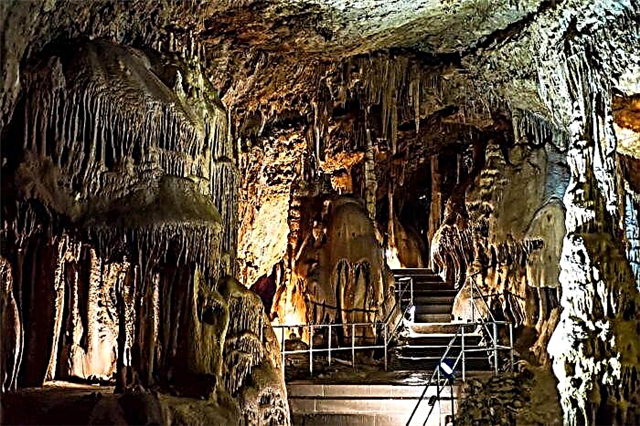
Oak "Hero of Taurida"
It grows on the territory of the Children's Park, where it appeared long before its opening. According to researchers, the oak is about 700 years old. Its crown reaches 30 meters in height, and its trunk is 6 meters in girth. In 1972, a fence and a security sign appeared around the natural monument. Oak is "familiar" with many historical figures, including the politician Winston Churchill, the chemist Felix de Serre and the poet Alexander Pushkin.

Simferopol reservoir
One of the largest artificial reservoirs of Crimea appeared on the maps in 1954. There are problems with fresh water on the peninsula, and the reservoir has partially solved them.The maximum area of the mirror is 317 hectares, and the depth is 32 meters. A protected area has been organized around the facility, within which any economic activity is prohibited. In the spring of 2021, the filling of the reservoir was 7% of the total volume.

Landscape reserve "Weeping Rock"
Created in 1989 and covers an area of almost 22 hectares. The rock itself is a natural monument. It is a cliff of bedrock, stretching along the slope for more than 110 meters, and reaches a height of 8 meters. The plants are dominated by medicinal herbs, plane trees, barberry and dogwood. Festivals and other mass events are held in the reserve. Nearby there are comfortable places for recreation, an ethnographic center and boarding houses.

Su-Uchkhan waterfall
Formed on the river of the same name. Water falls from a height of about 28 meters, flowing down steps and cascades. Due to the content of a large amount of lime in the water, a tuff area formed at the base of Su-Uchkhan. The best time to visit the falls is in the middle or late spring, when the river is at its fullest. Nearby are the Red Caves, as well as a car park and a recreation area. Located 25 km from the city.

Tash-Dzhargan tract
At this place, archaeologists have found the remains of ancient settlements. Their burial grounds were ransacked, as hundreds of years later, people used the slabs of the tombs as building material. Nearby there is Teshkli-Koba or "leaky cave". It is a vertical stone well 12 meters high. The cave was allegedly used for sacrifices. In Teshkli-Koba, with proper preparation, you can go down, as well as in the neighboring Serpentine Cave.

Unusual sights of Simferopol
The most famous and unusual tourist attractions in Simferopol are the old tram transformer substation and the abandoned Soviet radio telescope.
Simferopol tramway system transformer substation
Years of construction - 1912-1914. It was used for its intended purpose until 1970 and was part of the urban transport system. The substation and the street lighting poles surrounding it belong to the classic Industrial Art Nouveau style. Most of the objects of the tram system of Simferopol were dismantled by 2012. The substation not only survived, but also received the status of a monument of science and technology.

TNA-400 radio telescope in Shkolny
"Ground measuring station 10" was created in the 50s of the last century. He helped coordinate the launch of rockets and satellites. Among other things, thanks to him, Soviet researchers were able to track American spacecraft. Only the radio telescope itself of impressive size has survived to this day, the rest of the infrastructure is abandoned and destroyed. The object is currently under protection. Located 20 km from the city.

Where to go for a day from Simferopol?
If you have already seen everything interesting in the city, go to the Viking cinema park or the Taigan safari park.
Cinema Park "Viking"
To create the complex, the scenery from the film of the same name was used. Staged battles, brave fun, interactive games, quizzes await visitors. In the craft row, you can buy interesting souvenirs and useful handicrafts. Food for treating guests is prepared on a fire in the open air. The stylized restaurant "Prince Vladimir's Honey House" is also worth a visit. The park is located 25 km from the city.

Safari Park "Taigan"
The largest in Europe in terms of the number of lions and other predatory cats collected in it. Named after the reservoir, on the banks of which it is located. "Taigan" occupies an area that includes an abandoned military unit. Equipment not removed by the soldiers became part of the exposition. There is a hotel at the safari park. There is a "manual zoo" for children. In summer you can fly by helicopter. Located 45 km from the city.



